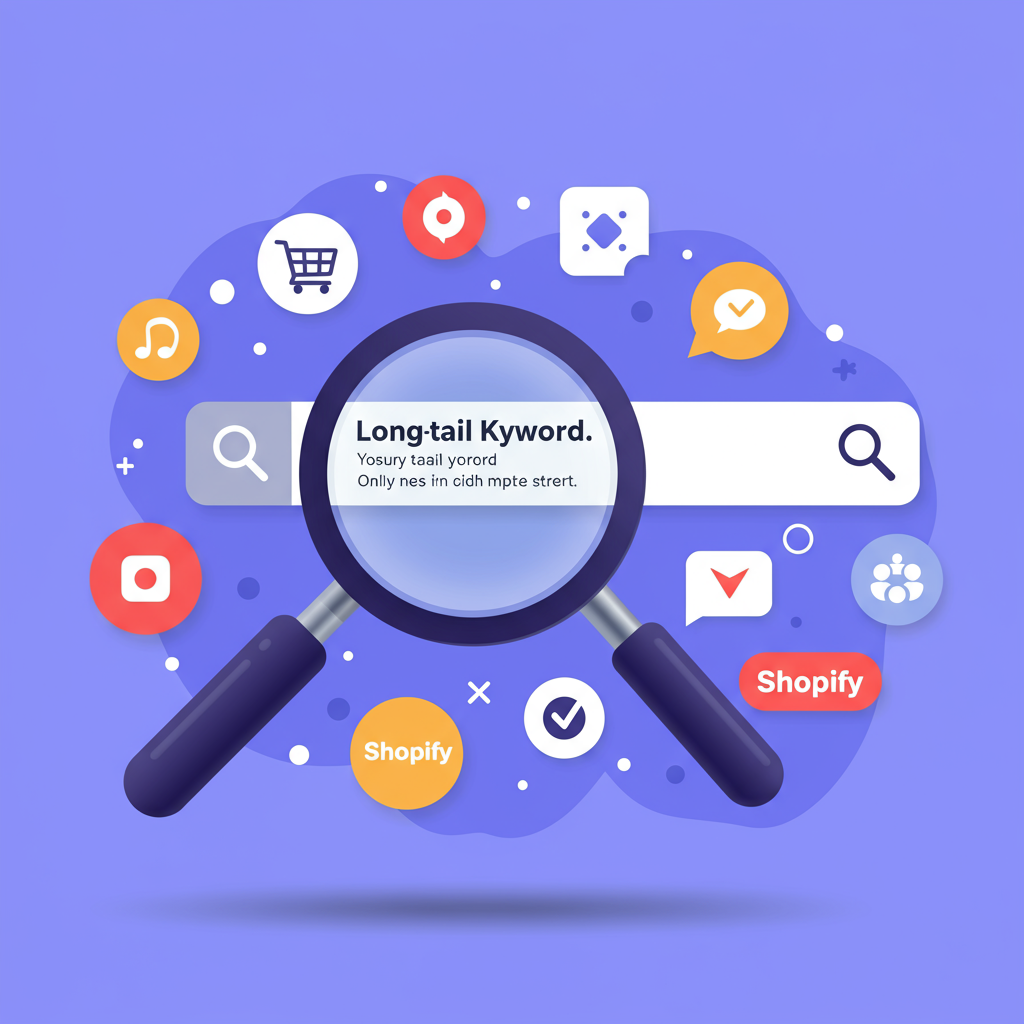Discover how focusing on specific search queries can dramatically boost your visibility and sales.
Hey there, fellow Shopify merchant! I’m here today to talk about a powerful, yet often overlooked, strategy that can truly transform your online store’s visibility and sales: long-tail keywords.
When we think about SEO, our minds often jump to broad, highly competitive keywords. Things like “women’s shoes” or “coffee mugs.” While these have high search volume, ranking for them is incredibly difficult, especially for smaller or newer stores.
This is where long-tail keywords come into play. Simply put, these are longer, more specific phrases that people type into search engines when they’re looking for something very particular.
Think of them as the detailed questions or specific needs your potential customers have. Instead of “women’s shoes,” a long-tail keyword might be “comfortable black leather ankle boots for wide feet.”
See the difference? It’s much more descriptive, and crucially, it indicates a much higher level of intent from the searcher. They know exactly what they want.
So, why should *you*, as a Shopify store owner, care so much about these seemingly niche phrases? Let me tell you, the benefits are substantial.
Firstly, there’s significantly less competition. While thousands of stores might be vying for “women’s shoes,” far fewer are optimizing for “comfortable black leather ankle boots for wide feet.” This makes it much easier for your store to rank higher.
Secondly, and perhaps most importantly, long-tail keywords lead to higher conversion rates. People searching for specific terms are usually further along in their buying journey.
They’re not just browsing; they’re often ready to make a purchase. When your product page perfectly matches their specific query, they’re much more likely to buy.
This targeted traffic means you’re attracting visitors who are genuinely interested in what you offer, leading to more sales and a better return on your SEO efforts.
Now, you might be wondering, “How do I find these magical long-tail keywords?” It’s easier than you think, and I’ve got some practical tips for you.
Start with brainstorming. Put yourself in your customer’s shoes. What problems do your products solve? What questions do people ask about them? Use natural language.
Think about product variations, colors, sizes, materials, and specific use cases. If you sell yoga mats, consider “eco-friendly non-slip yoga mat for hot yoga” instead of just “yoga mat.”
Google itself is a fantastic free tool. Start typing a broad keyword into the search bar and watch Google Autocomplete suggest longer phrases. These are often popular long-tail queries.
Scroll to the bottom of Google’s search results page and look at the “Related searches” section. This is a goldmine for discovering related long-tail opportunities.
Don’t forget the “People Also Ask” section. These are direct questions people are asking, and they make excellent long-tail keyword targets for your blog posts or FAQ pages.
Look at your competitors. What keywords are they ranking for? Tools like Ahrefs or SEMrush can reveal this, but even manually checking their product descriptions and blog content can give you clues.
Free tools like Google Keyword Planner (requires a Google Ads account, but you don’t have to run ads) or Ubersuggest can provide keyword ideas and estimated search volumes, helping you prioritize.
Even your own Shopify store’s internal search data can be incredibly insightful. What are your customers typing into your store’s search bar? These are direct indicators of their intent.
Pay attention to customer reviews and frequently asked questions. The language your customers use to describe their needs and experiences is often perfect for long-tail keywords.
Once you’ve identified a list of relevant long-tail keywords, the next step is to strategically integrate them into your Shopify store. This isn’t about keyword stuffing; it’s about natural inclusion.
**Product Pages**: This is crucial. Include your long-tail keywords naturally in your product titles, detailed descriptions, and image alt text. Make sure the content flows well and is helpful to the customer.
**Collection Pages**: Optimize your collection titles and descriptions with relevant long-tail keywords. This helps search engines understand what your collections are about.
**Blog Posts**: This is where long-tail keywords truly shine. Write detailed blog posts that answer specific questions related to your products or industry, using these keywords as your focus.
For example, if you sell pet supplies, a blog post titled “Best Chew Toys for Aggressive Chewers with Sensitive Gums” is a perfect long-tail target.
**Meta Descriptions and URL Slugs**: While not direct ranking factors, well-crafted meta descriptions (the snippet under your title in search results) that include keywords can improve click-through rates. Keep your URL slugs clean and keyword-rich.
**Image Alt Text**: Describe your product images using relevant long-tail keywords. This helps with image search and overall SEO.
Remember, the goal is always to provide value to your customer first. Search engines reward content that is helpful, relevant, and easy to understand.
After implementing these strategies, don’t just set it and forget it. Regularly monitor your performance using Shopify analytics, Google Analytics, and especially Google Search Console.
These tools will show you which keywords are bringing traffic to your site, how your pages are ranking, and where you can make further improvements.
Long-tail keyword optimization is an ongoing process. The market changes, customer needs evolve, and new keywords emerge. Stay agile and keep refining your strategy.
What do you think about this approach to SEO for Shopify stores? I’d love to hear your thoughts and experiences!
By consistently focusing on long-tail keywords, you’re not just chasing traffic; you’re attracting highly qualified leads who are actively looking for exactly what you offer.
This strategy, combined with a great product and excellent customer service, is a recipe for sustainable growth for your Shopify business. Go forth and conquer those niche searches!






